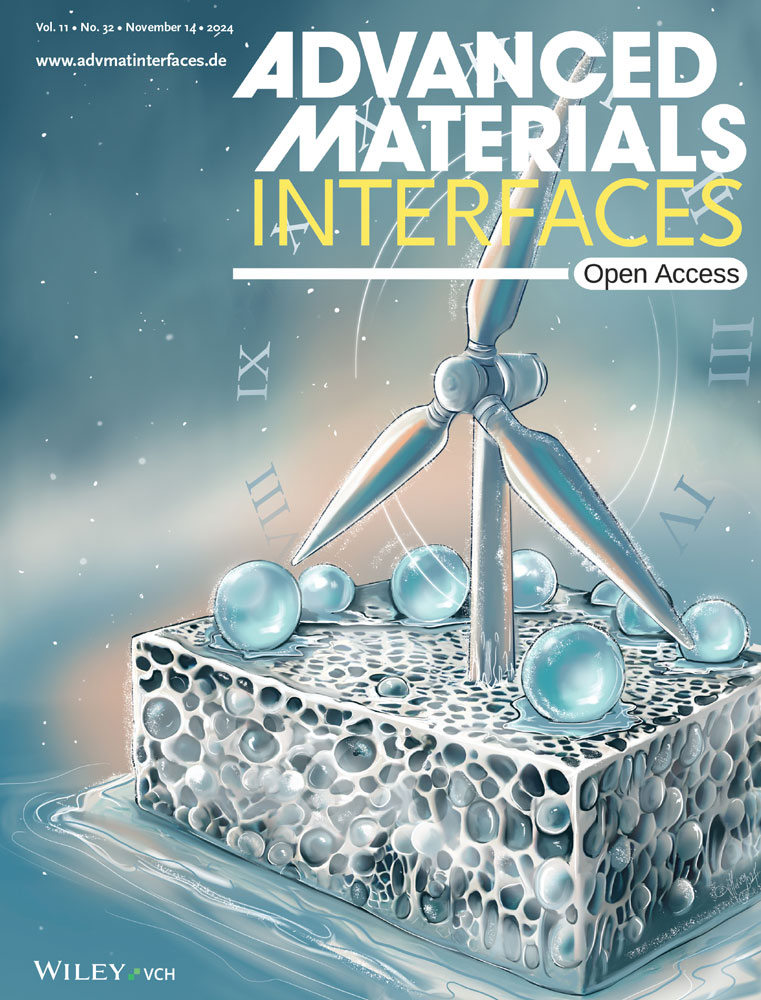利用极紫外光对范德华异质结构进行光学相干断层扫描
IF 4.3
3区 材料科学
Q2 CHEMISTRY, MULTIDISCIPLINARY
引用次数: 0
摘要
具有高平面外空间灵敏度和超快时间分辨率的新实验方法可以彻底改变人们对发生在界面上的电荷和热传递动力学的理解。在这项工作中,通过对不同的范德华异质结构应用极紫外(EUV)光相干断层扫描技术,实现了具有纳米轴向分辨率的三维样品重建,从而在这一方向上迈出了一步。此外,我们还通过对层状材料折射率的非初始计算,将测量结果与现有的经验数据数据库进行比较,从而证实了这一方法。超紫外相干层析成像对比度是在宽光谱范围(光子能量 65 - 100 eV)内估算出来的。这项工作为开发一种新的光谱学工具奠定了基础,得益于超紫外光源的时间轮廓和相干断层扫描的高轴向分辨率,它可以成为范德华异质结构和埋藏纳米级光电器件中发生的超快过程的理想探针。本文章由计算机程序翻译,如有差异,请以英文原文为准。

Optical Coherence Tomography of Van Der Waals Heterostructures Using Extreme Ultraviolet Light
New experimental methods with high out‐of‐plane spatial sensitivity combined with ultrafast temporal resolution can revolutionize the understanding of charge‐ and heat‐transfer dynamics occurring at interfaces. In this work, a step forward is taken in this direction by applying coherence tomography with extreme ultraviolet (EUV) light to different van der Waals heterostructures, which enables a 3D sample reconstruction with nanoscopic axial resolution. Furthermore, the measurements and, more in general, the approach is confirmed by ab initio calculations of the refractive index of layered materials that we compare to existing databases of empirical data. The EUV coherence tomography contrast is estimated in a broad spectral range (photon energy 65 –100 eV). This work sets the basis for the development of a new spectroscopy tool that, thanks to the temporal profile of EUV light sources and the high axial resolution of coherence tomography, can become the ideal probe of ultrafast processes occurring in van der Waals heterostructures and buried nanoscale opto‐electronic devices.
求助全文
通过发布文献求助,成功后即可免费获取论文全文。
去求助
来源期刊

Advanced Materials Interfaces
CHEMISTRY, MULTIDISCIPLINARY-MATERIALS SCIENCE, MULTIDISCIPLINARY
CiteScore
8.40
自引率
5.60%
发文量
1174
审稿时长
1.3 months
期刊介绍:
Advanced Materials Interfaces publishes top-level research on interface technologies and effects. Considering any interface formed between solids, liquids, and gases, the journal ensures an interdisciplinary blend of physics, chemistry, materials science, and life sciences. Advanced Materials Interfaces was launched in 2014 and received an Impact Factor of 4.834 in 2018.
The scope of Advanced Materials Interfaces is dedicated to interfaces and surfaces that play an essential role in virtually all materials and devices. Physics, chemistry, materials science and life sciences blend to encourage new, cross-pollinating ideas, which will drive forward our understanding of the processes at the interface.
Advanced Materials Interfaces covers all topics in interface-related research:
Oil / water separation,
Applications of nanostructured materials,
2D materials and heterostructures,
Surfaces and interfaces in organic electronic devices,
Catalysis and membranes,
Self-assembly and nanopatterned surfaces,
Composite and coating materials,
Biointerfaces for technical and medical applications.
Advanced Materials Interfaces provides a forum for topics on surface and interface science with a wide choice of formats: Reviews, Full Papers, and Communications, as well as Progress Reports and Research News.
 求助内容:
求助内容: 应助结果提醒方式:
应助结果提醒方式:


